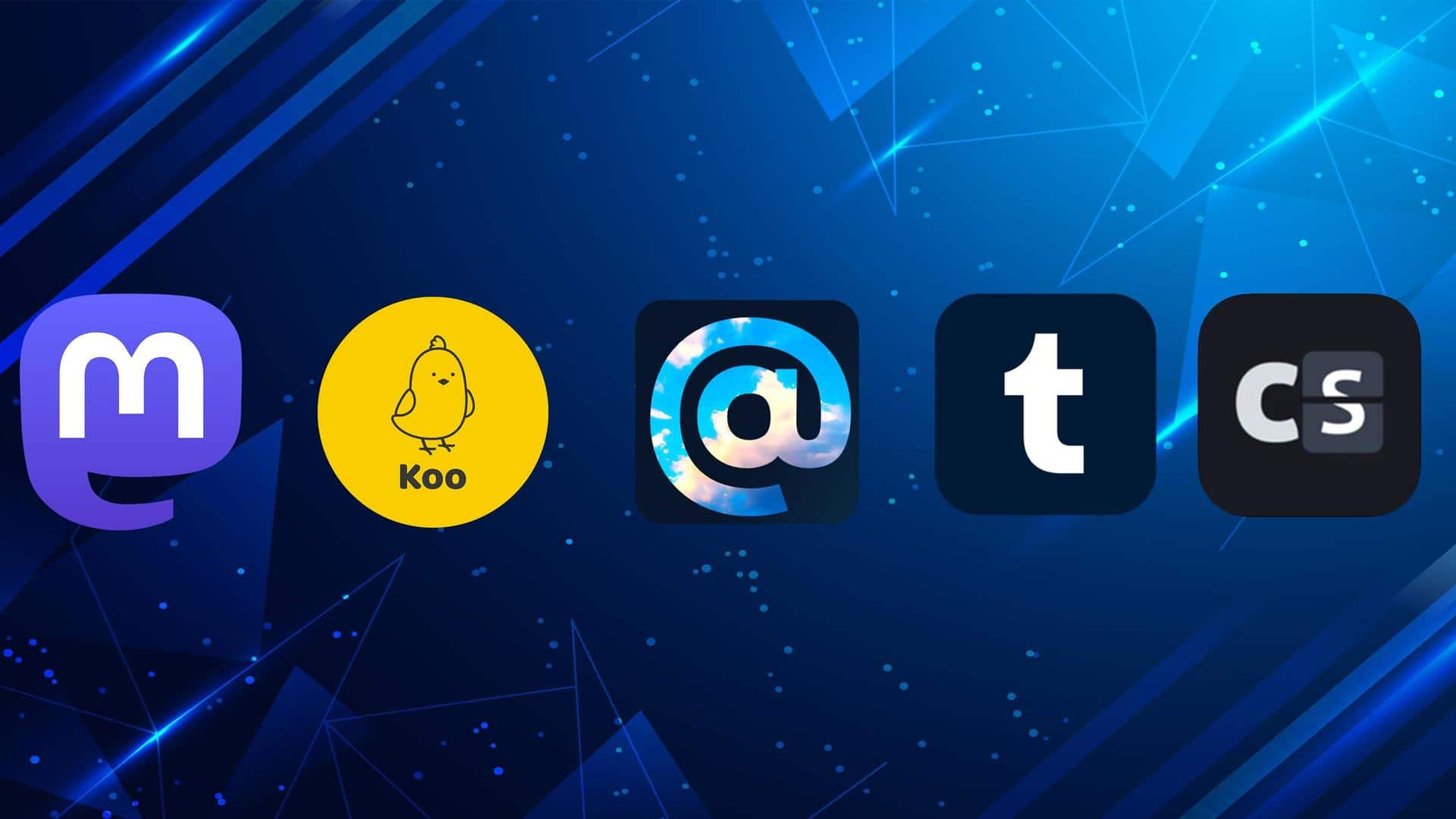
#NewsBytesExplainer: Amid Elon Musk's Twitter transition, how are rivals performing?
What's the story
On October 28, Elon Musk tweeted, "The bird is freed," marking the beginning of a new era for Twitter.
The billionaire has brought several changes to the company since then, but they haven't made everybody happy.
Disgruntled Twitter users have been flocking out of the bird app. Here, we take a look at how the platform's rivals have been performing since Musk's Twitter acquisition.
#1
Mastodon is a decentralized Twitter lookalike
Twitter lookalike Mastodon has been the main beneficiary of users flocking out of the bird app.
Founded in 2016, this app resembles Twitter in more than one way. You can "toot," "boost," and "favorite" posts. If you're wondering what they are, they are the alternatives to tweet, retweet, and like, respectively, on Twitter.
Mastodon, however, is a decentralized social network.
Performance
Mastodon received 3/4 of its users after Musk acquired Twitter
On the day Musk took over Twitter, 70,000 people signed up for Mastodon.
According to app analytics company Sensor Tower, between October 27 and November 6 this year, its mobile app was downloaded a total of 750,000 times worldwide.
Until then, in its six-year history, Mastodon was downloaded only a million times.
It even became a trending topic on Twitter itself.
#2
Bluesky, founded by Jack Dorsey, is in beta testing
Another decentralized alternative for Twitter in this list is Bluesky. This brainchild of Twitter co-founder and former CEO Jack Dorsey recently came out of relative anonymity with a website.
Bluesky is still in beta testing. Like Mastodon, it won't be owned by a single company. Instead, there will be multiple servers.
The company tweeted that it received 30,000 sign-ups for the waiting list.
#3
Koo has crossed 50 million downloads
Another "bird app" has emerged as a Twitter alternative, too. India-based Koo has opened its nest for disgruntled Twitter users who do not agree with Musk's handling of Twitter.
The app is promoting free verification against Twitter's $8/month for blue tick. It has already crossed 50 million downloads and is gunning aggressively for 100 million.
So far, Koo's focus has been on non-English-speaking countries.
New markets
The app now sees opportunities in English-speaking countries
Koo is known for its multilingual support. With ex-Twitterati looking for a better option than their once favorite app, Koo now sees opportunities in English-speaking countries as well.
The company has apparently become an option for ex-Tweeps as well. According to Mayank Bidawatka, co-founder of Koo, several ex-Twitter employees have approached the company since getting laid off by Musk.
#4
Tumblr has emerged as a different kind of alternative
Among the new alternatives to Twitter, there is also an old-timer that has been around for a while: Tumblr. It's been around since 2007, which means it's one year younger than Twitter.
At one point, it was worth over $1 billion. Then Yahoo happened, and its downhill journey began.
It has a great design and even has Ryan Reynolds. But not enough active members.
#5
Parler could lose users to Twitter
Meanwhile, Parler is in the same boat as Twitter. Recently, famous rapper Ye aka Kanye West announced that he is acquiring the platform.
Parler is similar to Twitter but has a smaller user base like other alternatives on this list. The app was founded on the premise of free speech.
Considering Musk is proposing the same, it may actually lose users to Twitter.
#6
CounterSocial, the next-gen social network
It is too early to say anything about some of the other lesser-known Twitter alternatives. Among them is CounterSocial, which calls itself the "next-gen social network."
As the name suggests, it is an antithesis of current social networks. Its aim is to create a space without trolls, fake news, abuse, ads, and foreign influence operations.
It promises to keep user data safe as well.
Information
It shows promise but needs improvement
CounterSocial shows promise. However, for it to challenge Twitter, it needs a lot of refining. As of now, the user interface reminds you of the old TweetDeck with several columns and moving parts. The feed might also remind you of a war screen.